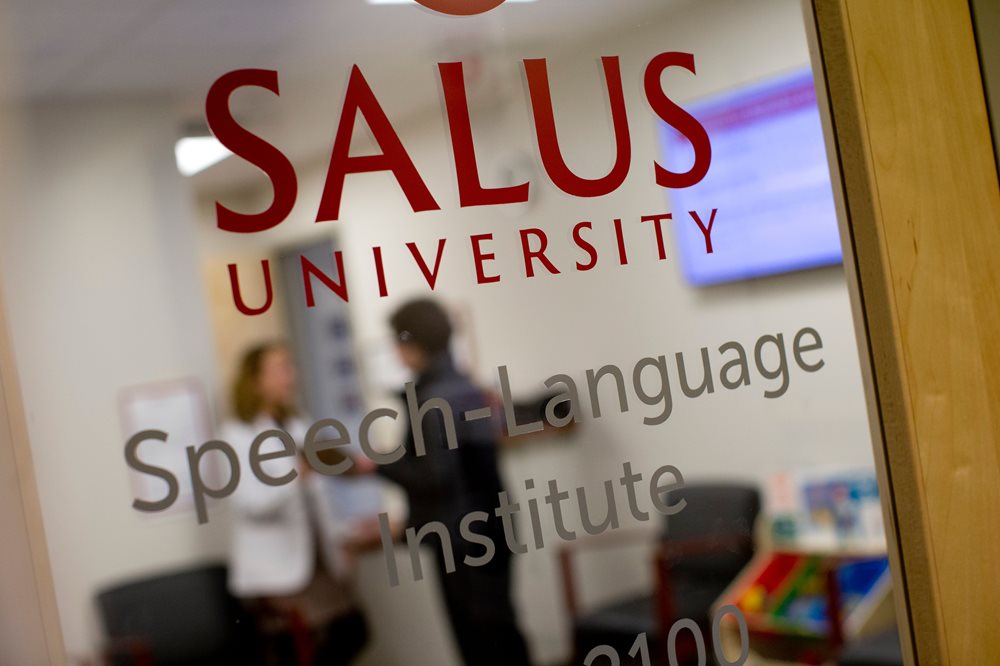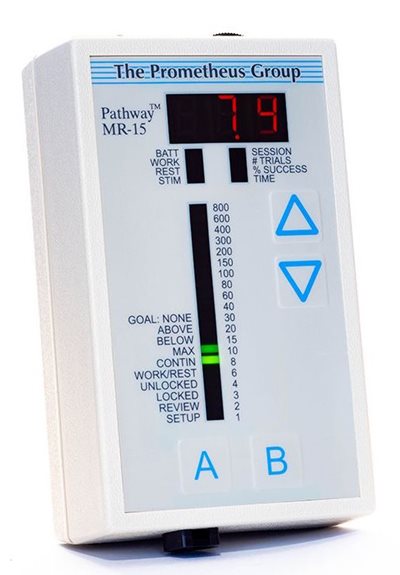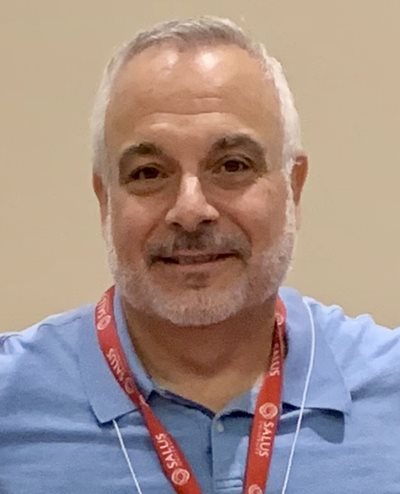Kenneth Newton, MS, CCC-SLP, wanted to find a way to memorialize some of the people he loves in a unique way. After a lot of thought, he decided the best way to do that was to give something back to the Speech-Language Pathology (SLP) program at Salus University in which he’s been an assistant professor for the past six years.
 Newton decided to put his money where other people’s mouths were by making a financial contribution to the program for a state-of-the-art Swallowing Rehabilitation System. Called a Surface Electromyography — or surface EMG, EMG or sEMG — the device will give SLP students an opportunity to work with technology to further their education in swallowing disorders and help them be more competitive in their externship rotations and job market after they graduate.
Newton decided to put his money where other people’s mouths were by making a financial contribution to the program for a state-of-the-art Swallowing Rehabilitation System. Called a Surface Electromyography — or surface EMG, EMG or sEMG — the device will give SLP students an opportunity to work with technology to further their education in swallowing disorders and help them be more competitive in their externship rotations and job market after they graduate.
Newton made the donation — the largest major financial gift in the SLP program’s history to this point according to Robert Serianni, MS, CCC-SLP, FNAP, chair and SLP program director — in the name of his mother and father, Jenny and Patrick Newton, Sr.; and his aunt, uncle and cousin, Margaret and Albert Newton and their son Raymond Newton.
“What I wanted to do was make a difference in people’s lives,” said Newton. “I thought if I could donate some instrumentation for the Swallow Lab, this would place our students at an advantage in the job force and also it would help recruit students to the University.”
 According to Serianni, the Swallow Lab is currently undergoing some renovations for additional space to house the sEMG and other assessment equipment.
According to Serianni, the Swallow Lab is currently undergoing some renovations for additional space to house the sEMG and other assessment equipment.
“Graduate schools typically do not purchase this type of equipment for student training purposes,” said Serianni. “While we wait for renovations to the lab space within the Speech-Language Institute (SLI), professors and clinical educators will begin using the technology in the classrooms that students are able to work with patients in our clinical facility.”
It’s important technology to have for the SLP program. When it comes to the swallowing muscles, it’s hard to feel the activity of the muscles, let alone the progress that one is making. Biofeedback from the sEMG brings these actions into conscious awareness by providing real-time representations of the muscle activity and supplying an alternative system of proprioception (perception or awareness of the position and movement of the body), thus extending the patient’s or clinician’s awareness of one aspect of swallowing behavior.
From the Pathway System provided by the software company Prometheus group, sEMG biofeedback lets you “see” how hard your muscles are working and for how long. When the line goes up on the graph, your muscles are contracting; when the line goes down, your muscles are relaxed. The higher the line goes up, the more intense the contraction. The longer the line stays up, the longer your muscles remain contracted.
By yielding a visible representation of even the smallest motor response, a window to rehabilitative efforts is opened, allowing the patient and clinician a means of confronting automatic physiologic behaviors and enhancing access to volitional motor control (the cognitive process by which an individual decides on and commits to a particular course of action).
 “It’s certainly reflective of Ken’s character to really think about others first,” said Serianni. “This would have taken an extensive capital campaign to purchase and he really came in and gifted us with a generous donation that’s allowed us to buy this special technology.”
“It’s certainly reflective of Ken’s character to really think about others first,” said Serianni. “This would have taken an extensive capital campaign to purchase and he really came in and gifted us with a generous donation that’s allowed us to buy this special technology.”
Newton, whose parents both had to receive swallowing therapy toward the end of their lives, believed something that touched the lives of students and patients was a great way to memorialize his loved ones.
“I also thought it was important to give back to Salus because I really love my job and I really love my students,” he said. “I think that this equipment places them at a great advantage compared to other programs in the area because they’re going to have hands-on training learning these skills.”